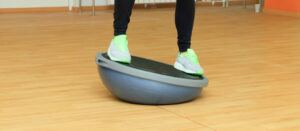Chronic Fatigue Syndrome Physiotherapy
Chronic fatigue syndrome (CFS) is a condition that affects approximately 1% of the population in the United States (in Singapore, it’s about 3-5%). And to make matters worse, if patient choose to not get treatment for a period of time, chronic fatigue syndrome can lead to disability and even death.
Contents
First up: what’s chronic fatigue syndrome? Sounds made up?
It sounds vague and unreal, but it’s a real condition that’s characterized by generalized fatigue and tiredness that persists for 6 months or longer, and is more intense-and-difficult than expected based on sheer effort a person normally uses.
Research is still being done as the medical community hadnt fully grasped the full understanding of causes of chronic fatigue syndrome, but scientists are theorizing / suspecting impairments to the patient’s
- aerobic process or energy output
- immunity compromised or immunology issues
- gastrointestinal or vital organ problems systems
may be responsible for the functional impairment experienced in individuals with this condition.
What does it feel like?
I imagine that it’s being very tired, even from the easiest tasks; but it’s easy to think that “it’s just lack of sleep or tired”. But it’s not that. Imagine not sleeping, resting PLUS working as normal for 100 days. It’s probably closer to that or worse.
Patients who suffer from chronic fatigue syndrome may feel
- generalized body pains
- constant headaches
- difficulty thinking (ie, “brain fog”) and
- low alertness or arousal levels
- sleep disturbances
Some patients with chronic fatigue syndrome has described it as having a flu that doesnt go away; with the flu symptoms coming and going on-off.
Unfortunately…there isnt any shown or proven recovery from chronic fatigue syndrome.
Signs and symptoms
Research has identified several symptoms of CFS, including:
- Fatigue, overall tiredness that lasts for 6 months or longer
- Generalized pain. Studies are showing significant amount of overlap of chronic fatigue syndrome and fibromyalgia, with some studies suggesting at least 50% patients with chronic fatigue syndrome likely also have fibromyalgia. In both conditions, there’s global general distributions of pain
- Frequent headaches. Many patients with CFS complain of recurring headaches, which can lead to avoiding physical activity and rest in bed
- Muscle weakness. Decreased physical activity and prolonged bed rest / sedentary lifestyle will lead to muscle atrophy of the cardiovascular and muscles, leading to weakness and even more fatigability (ironically).
- Mentally slow, low alertness and around, difficulty concentrating, memorizing, distractible or staying on task.
- Difficulty falling and staying sleep. Yes, another ironic point, even if they’re tired, they have difficulty sleeping, which makes it worse
- Flu-like symptoms. People often report having prolonged flu-like symptoms, with symptoms of sore throats, muscle aches, and generalized fatigue.
How is chronic fatigue syndrome diagnosed?
The approach is done by item-by-item exclusion, basically need to make sure that there’s no other health or medical problems that’s contributing to the fatigue; and because of this approach, diagnosing CFS can be a low and arduously frustrating process, especially for the patient.
Plus, there’s no specific real test that can confirm if the patient has chronic fatigue syndrome or not. The experienced physiotherapists may ask you:
- When do you feel fatigued and how long have you been feeling fatigued?
- Do you experience any widespread pain or discomfort?
- Have you noticed any significant changes in your ability to perform physical tasks?
- Have you noticed any sleep disturbances?
- Have you noticed any recent changes in your ability to think clearly?
Doctors may call for cardiopulmonary exercise testing, including 2 tests arranged 24 hours apart, to confirm and characterize the severity of your functional impairment.
How physiotherapy can help

The primary focus will be on improving
- stamina / endurance
- strength
- stability
- pain experience / pain relief
to decrease discomfort and increase your ability to engage and do normal activities.
Physical therapy treatments may include:
- Ergonomics and Education – planning tasks around energy demands
- Movement and sStrengthening exercises to improve your short-term endurance and strength and reduce your pain. We will help you identify specific movements that will help reduce your specific symptoms as well as avoid those that trigger fatigue
- Clinical pilates to increase core strength and dynamic stamina
- Manual therapy. Manual (hands-on) therapy may be applied to manipulate or mobilize the skin, bones, and soft tissues to help reduce pain and improve movement.
- Deep tissue massage to loosen tight muscles and keep them in tip-top length
- Acupuncture
Where To Next?
- Go to Home / Start
- Learn and find out more about your pains (bones, muscles, joints, tendons, ligaments, nerves etc) at Pain Conditions & Injuries
- Visit our shop to see products we recommend for pain relief, heating, treatments and more
- Contact us






